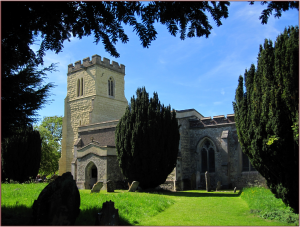Sports and Leisure
The Parish Council was delighted that the Pitstone & Ivinghoe Bonfire Festival moved to the sports ground on Westfield Road this year and that a record number of people attended, despite the torrential rain earlier in the day. Our thanks to the Pitstone & Ivinghoe Entertainments committee for all their hard work (and soaking) during the day to set the event up.
It was disappointing to see the back panel of the youth shelter, the sleeve of one litter bin, a dog bin and a toddler swing vandalized during the period. The back has been removed from the shelter and it won’t be replaced in the short term, a replacement toddler swing has been installed by the Memorial Hall, a replacement dog bin has been installed by the allotments and repair works carried out to the bin.
A replacement rolling log for the Hever Close playground (the old one had developed wood rot) has now been installed, and we are sure that you will all have seen the splendid new bench at the end of Glebe Close replacing the one that had reached the end of its life. During January some necessary tree works have been taking place on the recreation ground following the annual tree risk assessment report and ahead of the planned leisure development.
The aspiration remains to install a new play space, skate park and open-access multi-use ball court on the recreation ground by the Memorial Hall. For legal reasons, all are dependent upon planning permission being granted for the Pitstone Development Area site adjacent. We hope to have good news within the next few months.
Work has begun to scope improvements to the football ground on Marsworth Road, with an eventual aim of extending the number of sports that can be played at the site, as well as improving the facilities for football. We will update you with more news soon. It is disappointing to see so many young people continue to break into the grounds and use the goal areas for casual football which ruins the pitch and generates thousands of pounds of repair work. The pitch is carefully constructed to league standards and this means it is highly sand based to improve drainage, the downside being that the grass roots are delicate and can’t stand up to hours of continual use. If you have a teenager that you know jumps the fence to practice there, please speak to them. Apart from the obvious health & safety concerns of climbing the fence, and issues about non-visibility and lack of access for emergency services if they are hurt whilst trespassing, their actions are costing every household in Pitstone additional council tax for the council to keep repairing damaged pitch, goals, fencing, gates and guttering. Young people should utilize the recreation ground for casual footie practice as this is public open space and easily accessible.
Improving our paths, highways and sense of place
The Parish Council commissioned a report by Ben Hamilton Baillie Associates to assess the local highways, and predominantly focus on the Marsworth Road issues. We are working closely on this project with Ivinghoe Parish Council with the aspiration of improving pedestrian and cycle access around and between the villages, reducing traffic speeds, reducing HGV traffic and improving parking problems. Any recommendations arising would form part of a long term project, spread over a number of years. We hope to be able to start the dialogue process with all our residents with an initial presentation and consultation at some point in the spring so look out for some further details.
Herts County Council continue to pursue a foot/cycle path along Northfield Road to Tring station. This is likely to cost in excess of £600k and funding is currently being sought concurrently with investigations to overcome a number of other outstanding issues.
Transport for Bucks have carried out a feasibility study into a footpath between Pitstone and Marsworth and the two parish councils hope to be informed of the results during February. We will keep you posted.
Castlemead
Royal Mail continue to progress the installation of a letter box on Windsor Road despite several delays. Bucks County Council continue to work with Taylor Wimpey to bring the estate up to adoptable standard prior to handover – Taylor Wimpey were supplied with a list of remedial works some months ago.
Other service providers
We were grateful to Transport for Bucks for resolving the flooding problem under the Cheddington Road bridge and carrying out numerous re-surfacing works along Marsworth Road, Vicarage Road and the Westfield Road roundabout. Our thanks also to Bucks County Council for finally replacing all the faulty lighting on the Marsworth Road roundabout.
We hope you took the time to respond to the Aylesbury Vale District Council consultation on their emerging Vale of Aylesbury Plan and the protection of the Areas of Attractive Landscape.
Our thanks to Vale of Aylesbury Housing Trust for replacing the knocked down bollards in Yardley Avenue and repairing the pot holes towards the Yardley Avenue garage block.





